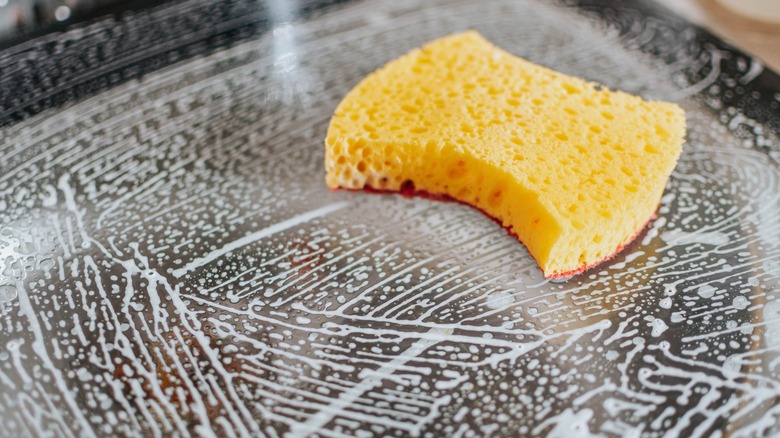Turn Your Hammer Into A Handy Mallet With This Sponge Hack
In the world of handyman tasks, the hammer stands as a timeless tool. Its versatility covers a spectrum of applications, from driving nails into walls to breaking apart materials. Yet, some projects call for a gentler touch than a conventional hammer can offer. The mallet, often used for woodworking or delicate assembly tasks, fills this niche by delivering softer blows that avoid damaging sensitive materials. But what happens when you don't have a mallet and need its unique attributes? The answer lies in a simple, ingenious hack involving a household sponge.
The sponge hack converts a standard hammer into a makeshift mallet. Begin by taking a large, dense kitchen sponge, wetting it thoroughly, and wringing out any excess water. The dampness of the sponge strikes a balance between cushioning and force. Next, wrap the sponge around the hammerhead, securing it tightly with duct tape or strong rubber bands. This will emulate a mallet's soft, forgiving surface without significantly reducing the impact force. This resourceful trick saves time and money and prevents unnecessary project damage. With this hack, you have the power to tackle delicate tasks without the need for a specialized tool like a mallet.
Practical applications of the sponge hammer hack
The practical applications of this sponge mallet are surprisingly diverse. In assembling flat-pack furniture, a task that demands delicate care to avoid damaging the material, the sponge mallet can tap pieces together gracefully. Additionally, this hack proves invaluable when working with softer materials like wood or metal, as it provides a more controlled force and disperses energy more evenly than a hammer, reducing the chance of accidental damage.
Using the sponge mallet hack isn't just about damage control but also comfort and convenience. The sponge absorbs shock, ensuring a better strike and a less harsh sound when hammering. Moreover, the sponge mallet is lighter and often more comfortable to use than a traditional hammer, making it a handy tool for prolonged projects. While this hack is not a perfect substitute for a mallet in every situation, it shines in its adaptability and resourcefulness. It demonstrates the essence of DIY culture: solving problems with creativity, ingenuity, and the tools at hand. The sponge mallet hack can be a real lifesaver when you're in a pinch, proving that sometimes, the most straightforward solutions can be the most effective.
Advantages and limitations of the sponge hammer hack
This improvised tool has distinct advantages. It is versatile, enabling customization of its firmness by altering the sponge's type or dampness. This flexibility allows it to mimic the softer blows of a mallet, designed for striking delicate materials without causing damage.
However, the sponge mallet hack is not without limitations. It lacks the weight and balance of a professional mallet, potentially affecting the precision and control of strikes. Moreover, the durability of the sponge might be a concern, as frequent use could lead to wear and tear, requiring replacement. It also may not be suitable for tasks requiring a traditional mallet's full force and density, such as shifting drywall panels into place or tapping bricks into the sand. Despite these drawbacks, the sponge mallet hack remains valuable for DIY enthusiasts, highlighting the innovative use of simple, everyday items. However, investing in a rubber or wooden mallet could prove more beneficial and efficient in the long runfor those who frequently need a mallet.


